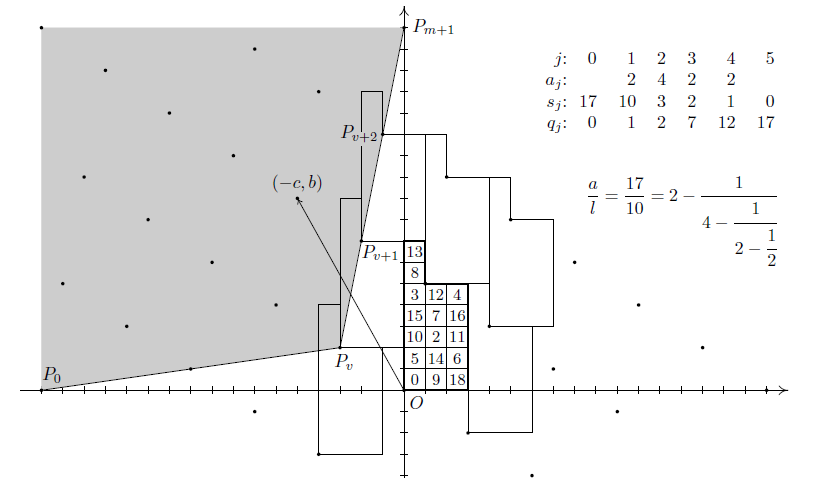For positive integers $a>b>0$, we can represent $a/b$ uniquely as $$\frac{a}{b}=a_1-\cfrac{1}{a_2-\cfrac{1}{\cdots-\cfrac{1}{a_n}}}=:[a_1,\dots,a_n]^{-}$$ with $a_i\geq 2$, and this is called the reduced regular (or Hirzebruch-Jung) continued fraction.
For ordinary continued fraction $[a_1,\dots,a_n]^+:= \frac{a}{b}=a_1+\cfrac{1}{a_2+\cfrac{1}{\cdots+\cfrac{1}{a_n}}}$, it is known that $1/[a_1,\dots,a_n]^+=[0,a_1,\dots,a_n]^+$ : https://math.stackexchange.com/questions/86043/reciprocal-of-a-continued-fraction.
Is there anything that we can say about the reciprocal $1/[a_1,\dots,a_n]^-$ of a reduced regular continued fraction $[a_1,\dots,a_n]^-$?
Also are there any books or papers about properties of reduced regular continued fractions?

